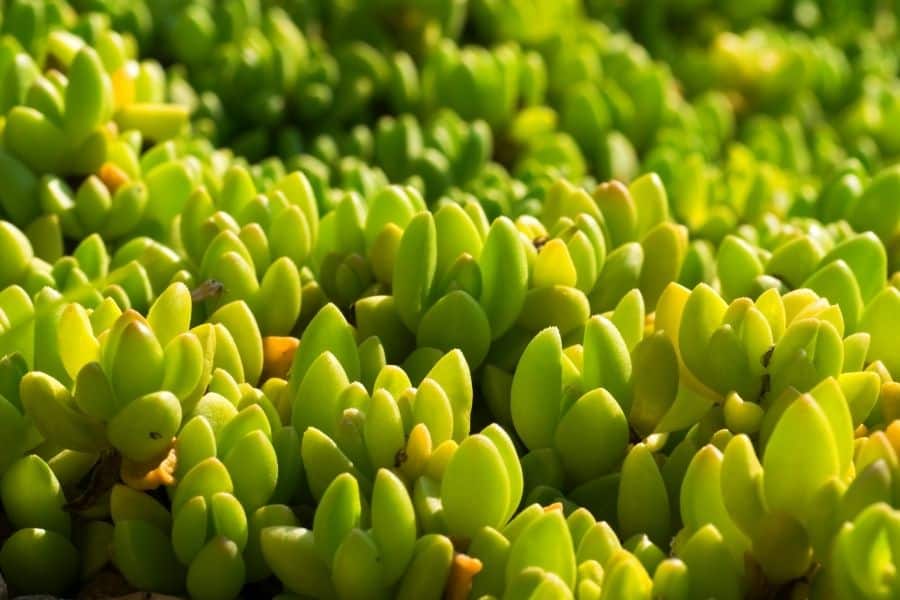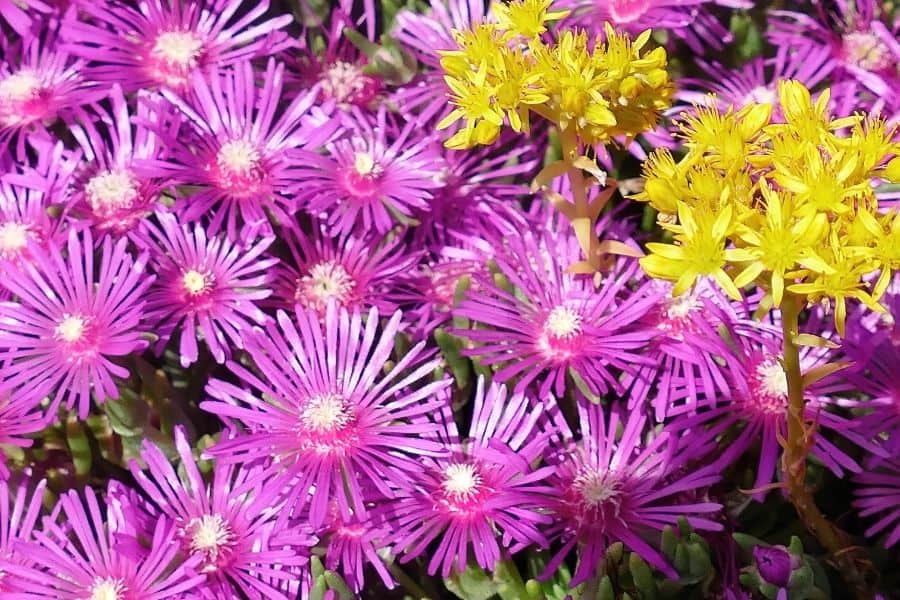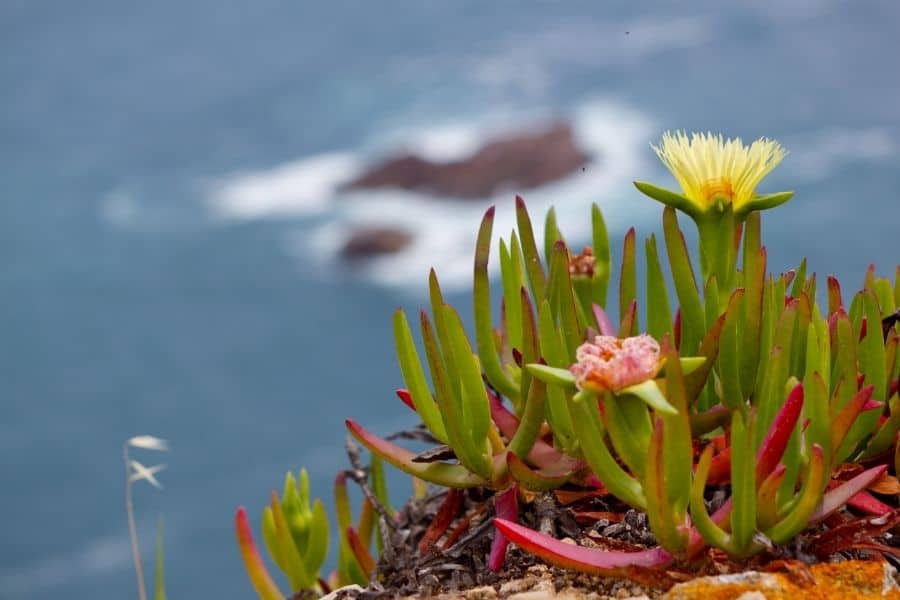Ice Plant Succulent Care 101: A Comprehensive Guide
Did you know that ice plants are a type of succulent that belongs to the Aizoaceae family? They’re called ice plants because the little hairs on their leaves look like shiny ice crystals in the sunlight. Pretty cool, right? Well, in this article, we’re going to dive deep into the world of ice plant succulents and learn all about how to take care of them. So, if you’re interested in keeping these fascinating plants happy and healthy, stick around! We’ve got all the information you need right here.
Contents
Types of Ice Plant Succulents
The ice plant family, scientifically known as Aizoaceae, is quite diverse and comprises a whopping 135 genera. Some popular genera within this family include the following:
- Aloinopsis
- Antegibbaeum
- Antimima
- Aptenia
- Argyroderma
- Astridia
- Bergeranthus
- Bijlia
- Braunsia
- Cephalophyllum
- Cheiridopsis
- Conophytum
- Corpuscularia
- Delosperma
- Dinteranthus
- Ebracteola
- Faucaria
- Fenestraria
- Frithia
- Gibbaeum
- Glottiphyllum
- Hereroa
- Ihlenfeldtia
- Jacobsenia
- Lampranthus
- Lapidaria
- Lithops
- Mesembryanthemum
- Monilaria
- Namibia
- Nananthus
- Nelia
- Neohenricia
- Oscularia
- Pleiospilos
- Rhombophyllum
- Ruschia
- Sarcozona
- Titanopsis
- Vlokia
Caring for an Ice Plant Succulent: A Guide

Ice plants are fascinating succulents that belong to the Aizoaceae family. While most of them are native to South Africa, you can also find them in coastal areas of the Mediterranean, the US, California, and Australia. The two popular genera of ice plants are Delosperma and Lampranthus.
These resilient plants have fleshy, elongated foliage that gives them a succulent-like appearance. They come in various forms, from bushy shrubs to spreading ground cover. One of the most striking features of ice plants is their bright and colorful flowers, which resemble asters or daisies. You can find them in a range of vibrant colors like purple, scarlet, magenta, white, orange, yellow, and even bi-color.
Now, let’s dive into some important aspects of caring for ice plant succulents.
Sunlight Requirements

Ice plants thrive in full sun, meaning they need at least 6 hours of direct sunlight per day to bloom abundantly. Avoid shaded areas as they can weaken the growth of the plant. Consider placing them near your swimming pool, sunny patio, or deck to enjoy their stunning beauty.
Soil Preferences
These succulents prefer dry soil with excellent drainage. They won’t grow well in dense clayey soil that retains water. Opt for gravelly and sandy soil that is porous. The pH level should be neutral, and the soil doesn’t need to be highly nutritious.
Watering Tips
Ice plants are drought-resistant thanks to their ability to store water in their leaves, stems, and roots. During the growing season, they typically require about one inch of water per week. However, avoid overwatering, as it can block oxygen flow to the roots and lead to root or stem rot. In dry and arid weather, water the plants deeply once every 7 to 10 days. Make sure the root ball is soaked properly by watering the soil to a depth of 7 to 12 inches. During the cold season, avoid watering before a freeze to prevent damage. If snow is expected, cover the soil with dry mulch to keep the plant dry.
Ideal Climate

Ice plants thrive in bright, sunny gardens and prefer warmer climates. In dry regions with lower humidity (USDA hardiness zones 6 to 8), they grow as perennials. In colder and wetter climates (USDA hardiness zones 4 and 5), they function as annuals and do best in containers rather than in the ground. If you live in zone 7, you can bring them indoors during winter.
Propagation Methods
You can propagate ice plants either through cuttings or seeds. For cuttings, take a portion of the stem, allow it to callous, and insert it into well-draining soil. Water only when the soil is completely dry. If using seeds, scatter them on the soil surface without covering them, as they need light to germinate. The germination process can vary based on your USDA hardiness zone.
FAQs
How big do ice plant succulents get?
Most ice plant varieties have a fast growth rate, with some doubling in size within the first year. They can spread and cover a significant amount of ground, reaching up to 4 feet in width. In terms of height, they typically grow between 3 to 6 inches, with succulent foliage and vibrant flowers.
Is ice plant poisonous to dogs?
No, ice plants are pet-safe perennials. While they are not poisonous to dogs, it’s important to note that they are not meant to be eaten in large quantities. If your dog consumes a few leaves, they shouldn’t have any issues. However, ingesting a whole ice plant or multiple plants may cause stomach upset, diarrhea, or vomiting. Monitor your dog and seek veterinary advice if needed.
